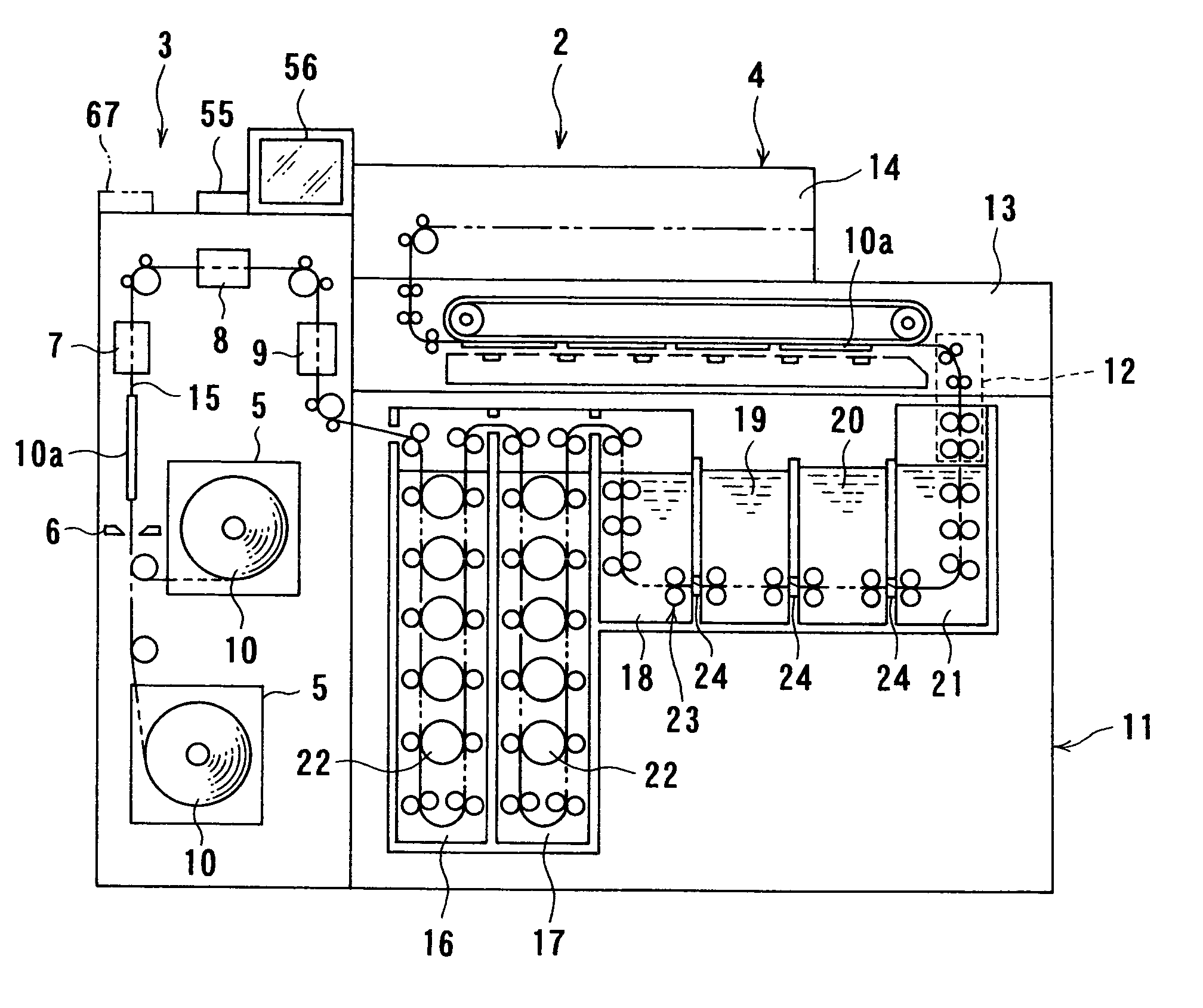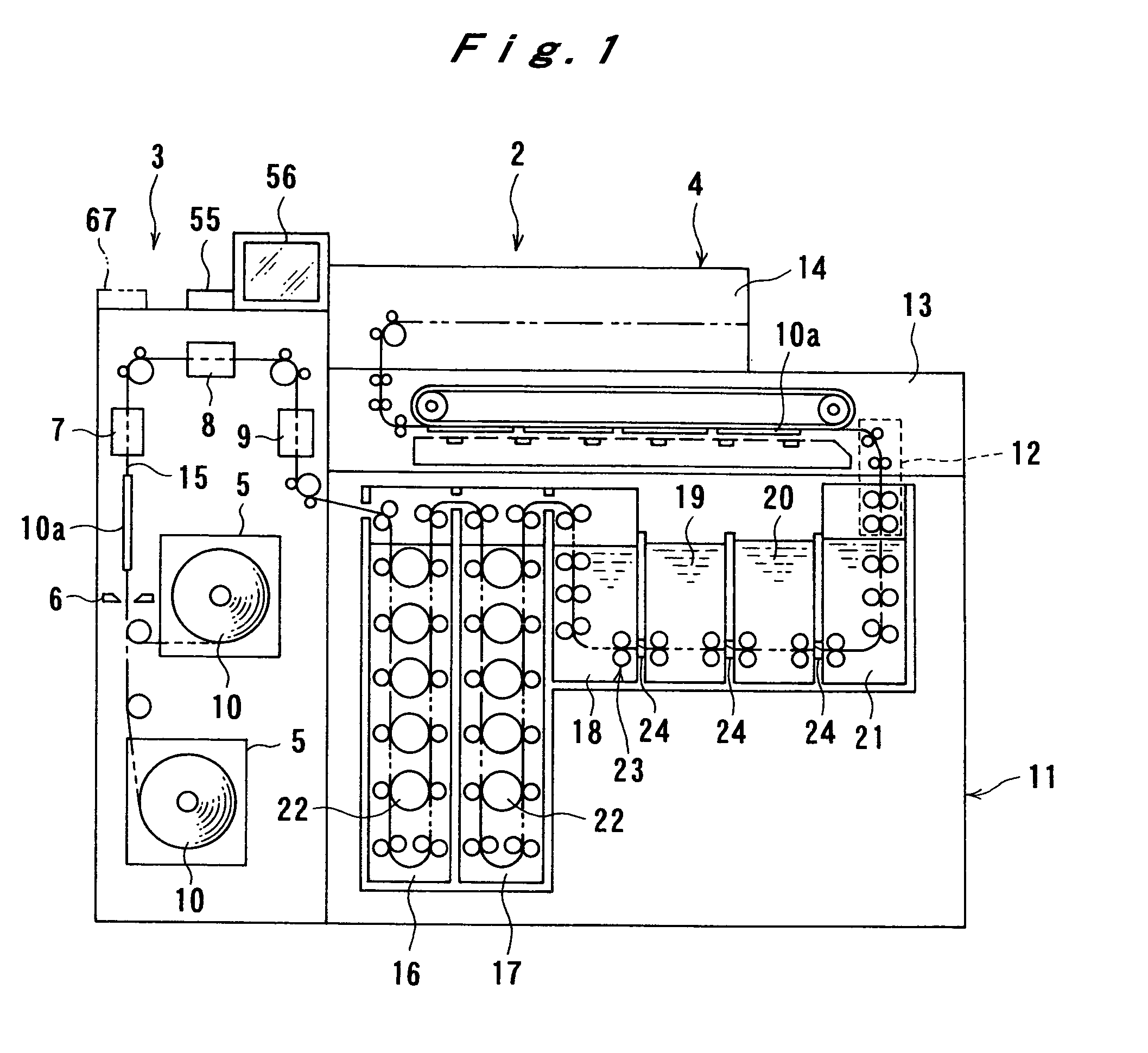Silver halide color photographic light-sensitive material and color image-forming method
a color photographic and silver halide technology, applied in the direction of photosensitive materials, photo-taking processes, instruments, etc., can solve the problems of reducing the total processing time required for high-chloride print materials to undergo all process steps, short-time printing service offered to customers, and reducing the total processing tim
- Summary
- Abstract
- Description
- Claims
- Application Information
AI Technical Summary
Benefits of technology
Problems solved by technology
Method used
Image
Examples
example 1-1
(Preparation of Blue-sensitive Layer Emulsion BH-11)
[0648] Using a method of adding silver nitrate and sodium chloride simultaneously to a deionized distilled water containing a deionized gelatin to mix these, under stirring, cubic high silver chloride grains were prepared. In the course of this preparation, Cs2[OsCl5(NO)] was added, over the step of from 60% to 80% addition of the entire silver nitrate amount. Over the step of from 80% to 90% addition of the entire silver nitrate amount, potassium bromide (1.5 mol % per mol of the finished silver halide) and K4[Fe(CN)6] were added. Over the step of from 83% to 88% addition of the entire silver nitrate amount, K2[IrCl6] was added. Over the step of from 92% to 98% addition of the entire silver nitrate amount, K2[IrCl5(H2O)] and K[IrCl4(H2O)2] were added. At the completion of 94% addi of the entire silver nitrate amount, potassium iodide (0.27 mol % per mol of the finished silver halide) was added under vigorous stirring. The thus-o...
example 1-2
[0675] Samples 1100 and 1105 in Example 1-1 each were made into a roll with a width of 127 mm; the resultant samples were exposed to light with a standard photographic image, using Minilab Printer Processor Frontier 340 (trade name, manufactured by Fuji Photo Film Co., Ltd.; wherein the sheet-conveying speed was set at 28 mm / sec); and then, the exposed samples were continuously processed (running test) in the following processing steps, respectively, until an accumulated replenisher amount of the color developing solution reached to be equal to twice the color developer tank volume.
[0676] The above samples were evaluated according to the same methods as adopted in Example 1-1, except that the photographic processing was performed under the following conditions.
ReplenisherProcessing stepTemperatureTimeamountColor development43.0° C.25.5 sec 45 mL / m2Bleach-fixing40.0° C.25.5 sec 35 mL / m2Rinse 140.0° C. 7.3 sec—Rinse 240.0° C. 3.5 sec—Rinse 340.0° C. 3.5 sec—Rinse 440....
example 1-3
[0684] Sample No. 1301 and Sample No. 1302 as described below were prepared. These Samples were processed according to the Processing A described in Example 1-1. As a result of making evaluations following Example 1-1, it is shown that these Samples were able to achieve the similar effects as the samples prepared in Example 1-1 according to the present invention.
—Preparation of Sample 1301—
[0685] A sample 1301 was prepared in the same manner as Sample 1105, except that the compositions of the third and fifth layers were changed as described below.
Third layer (Green-sensitive emulsion layer)Emulsion (a 1:3 mixture of GH-11 and GL-11 (mol ratio of silver))0.12Gelatin0.95Magenta coupler (Ma-48)0.21Oleyl alcohol0.33Color-image stabilizer (ST-1)0.04Color-image stabilizer (ST-2)0.28Fifth layer (Red-sensitive emulsion layer)Emulsion (a 4:6 mixture of RH-11 and RL-11 (mol ratio of silver))0.15Gelatin0.95Cyan coupler (IC-23)0.30Ultraviolet absorber (UV-5)0.36Dibutyl sebacate0.44Tris(2-eth...
PUM
| Property | Measurement | Unit |
|---|---|---|
| conveying speed | aaaaa | aaaaa |
| conveying speed | aaaaa | aaaaa |
| speed | aaaaa | aaaaa |
Abstract
Description
Claims
Application Information
 Login to View More
Login to View More - R&D
- Intellectual Property
- Life Sciences
- Materials
- Tech Scout
- Unparalleled Data Quality
- Higher Quality Content
- 60% Fewer Hallucinations
Browse by: Latest US Patents, China's latest patents, Technical Efficacy Thesaurus, Application Domain, Technology Topic, Popular Technical Reports.
© 2025 PatSnap. All rights reserved.Legal|Privacy policy|Modern Slavery Act Transparency Statement|Sitemap|About US| Contact US: help@patsnap.com



